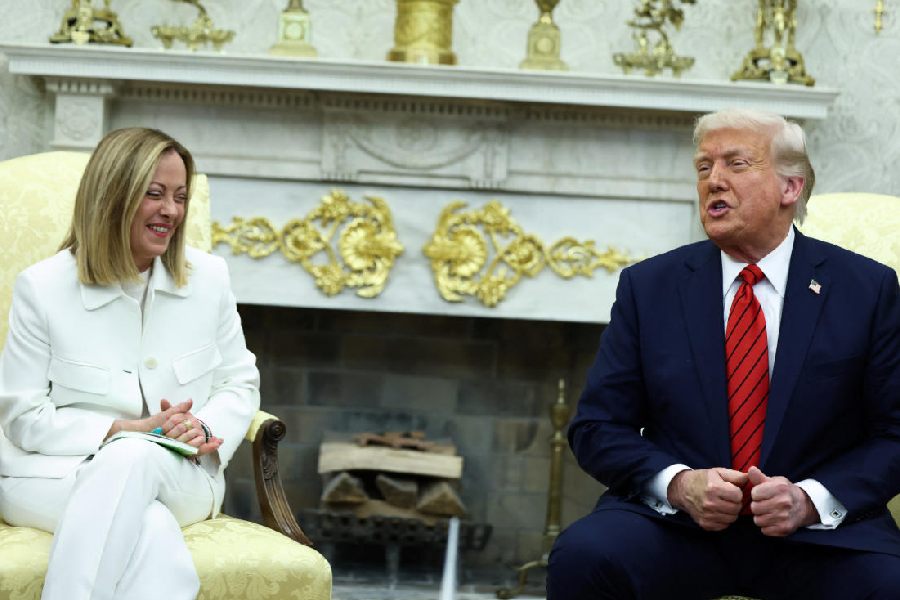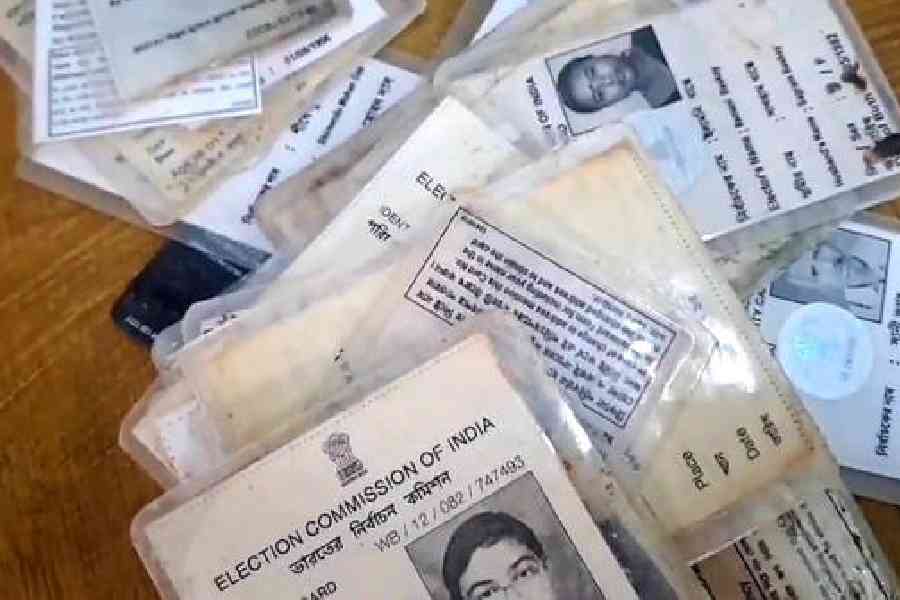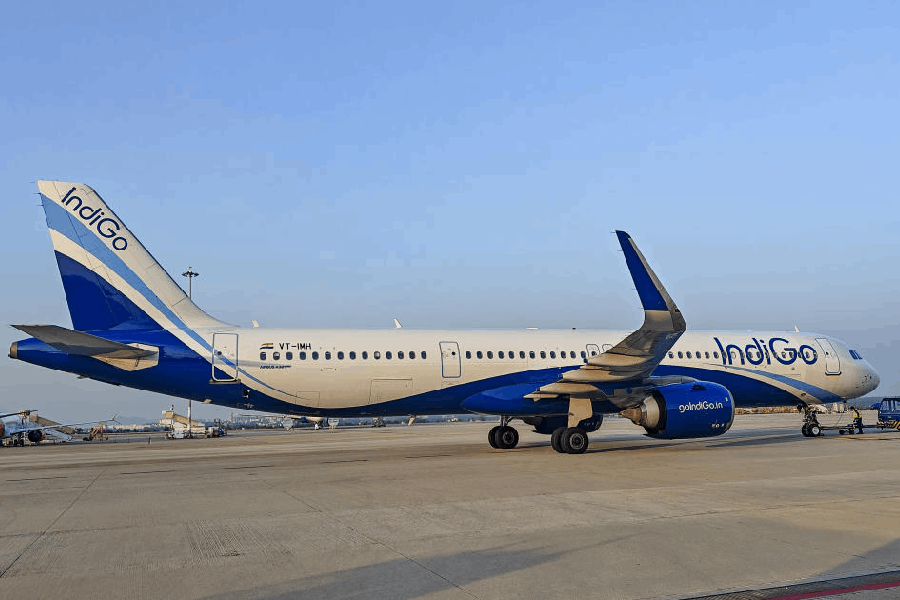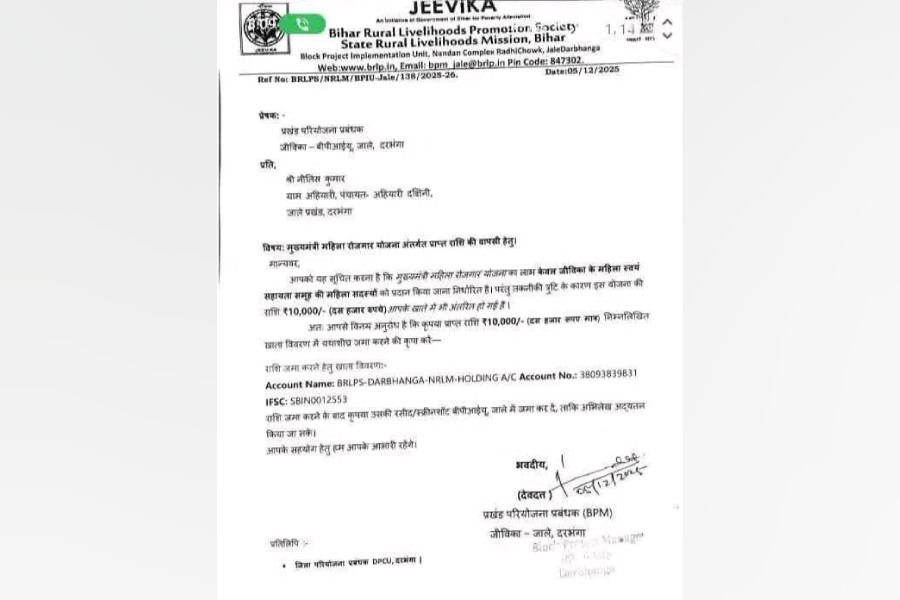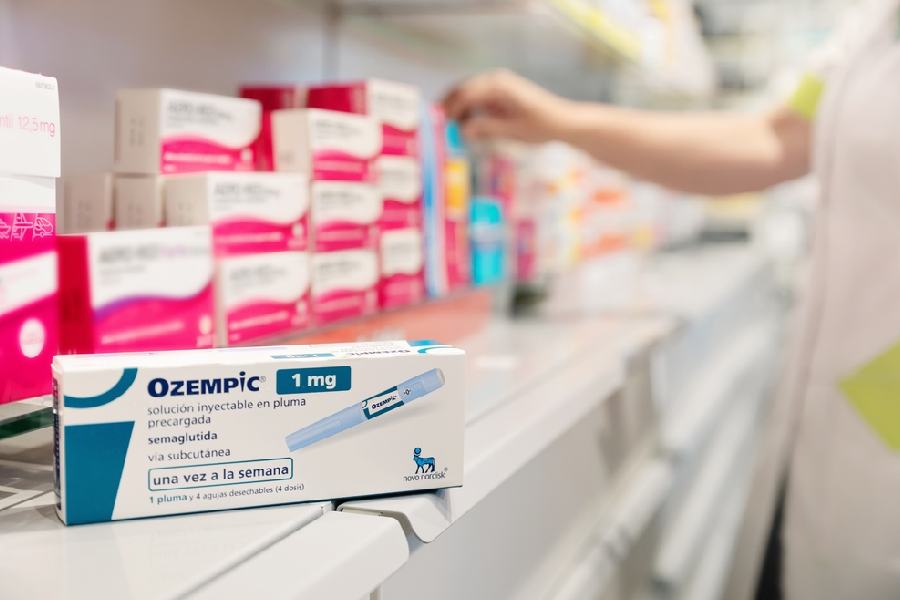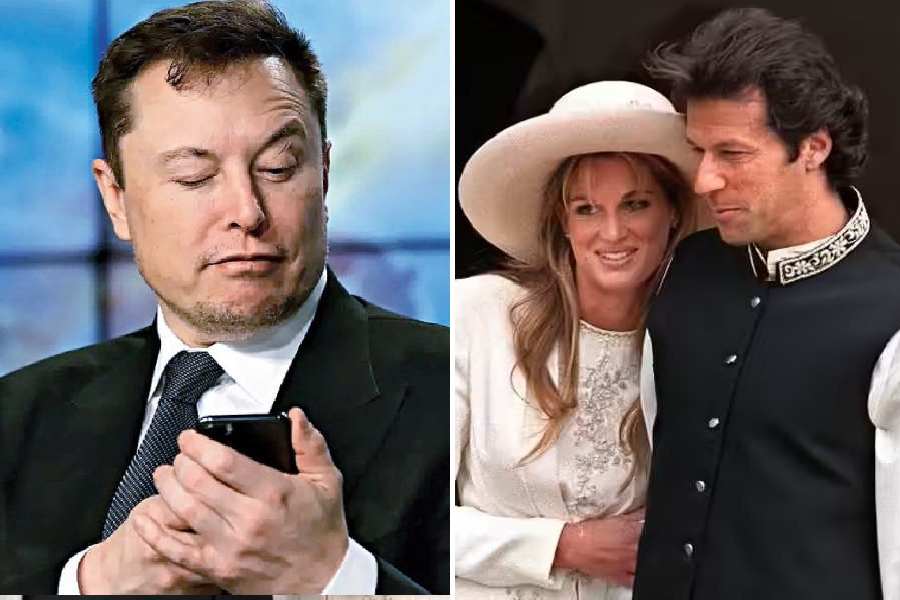President Donald Trump said Thursday that he is in “no rush” to reach any trade deals because of the revenues his tariffs are generating, but he suggested while meeting with Italian Premier Giorgia Meloni that it would be easy to find an agreement with the European Union and others.
Trump played down the likelihood of an accelerated timeline to wrap up deals, saying any agreements would come “at a certain point.”
“We're in no rush,” said Trump, hinting that he has leverage because other countries want access to US consumers.
Meloni's meeting with Trump is testing her mettle as a bridge between the EU and the United States. She is the first European leader to have face-to-face talks with the president since he announced and then partially suspended 20 per cent tariffs on European exports.
Meloni secured the meeting as Italy's leader, but she also has, in a sense, been “knighted” to represent the EU at a critical juncture in the fast-evolving trade war that has stoked recession fears.
The Trump administration has belittled its European counterparts for not doing enough on national security while threatening their economies with tariffs, sparking deep uncertainty about the future of the trans-Atlantic alliance.
“We know we are in a difficult moment," Meloni said this week in Rome. "Most certainly, I am well aware of what I represent, and what I am defending."
The EU is defending what it calls “the most important commercial relationship in the world,'' with annual trade with the US totalling 1.6 trillion euros (USD 1.8 trillion). The Trump administration has said its tariffs would enable trade negotiations that would box out China, the world's dominant manufacturer. But Trump maintains that rivals and allies alike have taken advantage of the US on trade.
Instead of being the responsibility of individual member states, trade negotiations fall under the authority of the EU Commission, which is pushing for a zero-for-zero tariff deal with Washington.
Administration officials, in talks with the EU, have yet to publicly relent on the president's baseline 10 per cent tariff. Trump paused for 90 days his initial 20 per cent tax on EU products so that talks could occur.
The EU has already engaged with Trump administration officials in Washington. Maroš Šefcovic, the European Commissioner for trade and economic security, said he met on Monday with Commerce Secretary Howard Lutnick and US Trade Representative Jamieson Greer.
Šefcovic said afterward on X that it would “require a significant joint effort on both sides” to get to zero tariffs and work on non-tariff trade barriers, with Trump's team specifically objecting to Europe's use of value added taxes.
Meloni's margins for progress are more in gaining clarity on the Republican president's goals rather than outright concessions, experts say.
“It is a very delicate mission,” said Fabian Zuleeg, chief economist at the European Policy Center think tank in Brussels. “There is the whole trade agenda, and while she's not officially negotiating, we know that Trump likes to have this kind of informal exchange, which in a sense is a negotiation. So it's a lot on her plate."
As the leader of a far-right party, Meloni is ideologically aligned with Trump on issues including curbing migration, promoting traditional values and scepticism toward multilateral institutions. But stark differences have emerged in Meloni's unwavering support for Ukraine after Russia's invasion in February 2022.
The two leaders are expected to discuss the war and Italy's role in an eventual postwar reconstruction of Ukraine. Trump is expected to press Meloni to increase Italy's defence spending, which last year fell well below the 2 per cent of gross domestic product target for countries in the NATO military alliance. Italy's spending, at 1.49 per cent of GDP, is among the lowest in Europe.
Despite the differences on Ukraine and defence spending, Meloni is seen by some in the US administration as a vital bridge to Europe at a difficult moment for trans-Atlantic relations.
Trump is looking not only to discuss with Meloni how “Italy's marketplace can be opened up, but also how they can help us with the rest of Europe,” according to a senior administration official who briefed reporters before the visit. The official spoke on the condition of anonymity under ground rules set by the White House.
After being the only European leader to attend Trump's January 20 inauguration, Meloni has responded with studied restraint as abrupt shifts in US policy under Trump have frayed the US-European alliance. She has denounced the tariffs as "wrong" and warned that “dividing the West would be disastrous for everyone,” after Trump's heated White House exchange with Ukraine's president.
Italy maintains a 40 billion euro (USD 45 billion) trade surplus with the US, its largest with any country, fuelled by Americans' appetite for Italian sparkling wine, foodstuffs like Parmigiano Reggiano hard cheese and Parma ham, and Italian luxury fashion. These are all sectors critical to the Italian economy, and mostly supported by small- and medium-sized producers who are core centre-right voters.
“All in all, I think she will focus on the very strong economic and trade relations that Italy has with the United States, not just in terms of exports, but also services and energy," said Antonio Villafranca, vice president of the ISPI think tank in Milan. “For example, Italy could even consider importing more gas from the US.”
The meeting comes against the backdrop of growing concerns over global uncertainty generated by the escalating tariff wars. Italy's growth forecast for this year has already been slashed from 1% to 0.5% as a result.
The Trump administration has imposed tariffs on much of the world, arguing that other countries have taken advantage of the US, as evidenced by its trade deficits. But with the 90-day pause, the White House has increased Trump's tariffs on China to 145 per cent while keep separate tariffs of as much as 25 per cent on Canada, Mexico, autos, steel and aluminum.
On Wednesday, Trump met with Japan's chief trade negotiator, Ryosei Akazawa. Trump, on social media, summarized the meeting s achieving “Big progress!” but he did not offer any specifics.
China is simultaneously seeking to strike deals that could possibly undercut claims made by Trump that his tariffs will ultimately lead to more domestic factory jobs and stronger growth.

